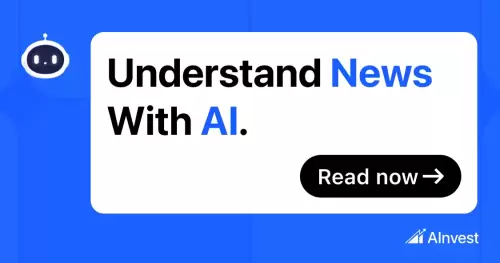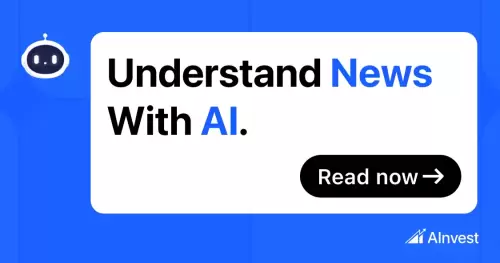 |
|
 |
|
 |
|
 |
|
 |
|
 |
|
 |
|
 |
|
 |
|
 |
|
 |
|
 |
|
 |
|
 |
|
 |
|
加密货币新闻
The internet has long promised freedom—freedom to connect, to create, and to share without boundaries.
2025/05/06 16:59

The internet has long promised freedom—freedom to connect, to create, and to share without boundaries. But somewhere along the way, that vision was redefined. Platforms became platforms of power. Services became ecosystems with rules. And users, once seen as participants, increasingly found themselves positioned as products.
This evolution gave rise to the “walled garden” model: closed ecosystems where companies control not only the tools and content, but the very architecture that shapes user experience. Innovation is curated, access is gated, and data flows in one direction—toward centralized entities.
But a quiet revolution is underway. At its center is LayerK, a blockchain infrastructure designed not around control, but around collaboration, transparency, and digital sovereignty.
What Walled Gardens Take Away
Walled gardens offer convenience, but often at a hidden cost. Behind sleek interfaces and personalized feeds lies a trade-off: users give up agency for access. Algorithms determine what is seen. Platforms decide what is possible. And data—our identities, behaviors, and contributions—becomes locked within proprietary systems.
Developers face similar limitations. Building within closed platforms means working under ever-changing terms, with limited interoperability and few guarantees of permanence or autonomy. Innovation is permitted, but rarely liberated.
The core challenge isn’t just technical—it’s philosophical. The centralized web thrives on permission. The decentralized web, by contrast, is rooted in participation.
LayerK’s Alternative: Open by Design
LayerK represents a return to the internet’s original promise: an open space where ideas, tools, and communities can flourish without structural constraints.
As a decentralized, EVM-compatible blockchain, LayerK allows builders and users to interact with infrastructure that is transparent, permissionless, and provides a high level of scalability. But it’s not just about smart contracts or scalability—it’s about ownership.
In the LayerK ecosystem, no single entity dictates the terms of engagement. Rules are written into the protocol, accessible and verifiable by anyone. Participation is not requested—it’s enabled. Builders create their own applications, communities govern their own spaces, and users engage without surrendering control of their data or identity.
This architecture isn’t reactive—it’s proactive. It doesn’t mimic traditional systems. It reimagines them.
Empowering Digital Sovereignty
Digital sovereignty is the ability to govern one’s digital life without dependence on intermediaries. It’s about deciding how and where your data is stored, how your online identity is represented, and how you engage with digital environments.
LayerK supports this vision by placing power at the edges—closer to the people and projects shaping the network. Through decentralized identifiers, transparent governance, and modular tools, it becomes possible for communities to build systems that reflect their own values and visions.
Whether you’re a developer crafting tools, an artist cultivating digital spaces, or a community experimenting with new forms of collaboration, LayerK provides the scaffolding to do so on your own terms.
A Culture of Collaboration, Not Control
One of the most striking aspects of decentralized ecosystems like LayerK is the shift in culture. Rather than siloed competition, there is open collaboration. Protocols are composable, meaning they can be combined, remixed, and extended to suit new purposes.
This unlocks exponential potential. Builders don’t start from scratch—they build upon shared infrastructure, contribute to collective knowledge, and co-create tools that benefit everyone.
This isn’t just technological openness—it’s a cultural one. A shared belief that the best systems are those that invite contribution, not compliance.
Looking Ahead
The debate between centralized convenience and decentralized control is not one of absolutes. Each model has its place. But as the internet continues to evolve, the need for alternatives—ones that prioritize user empowerment, transparency, and flexibility—becomes increasingly urgent.
LayerK isn’t claiming to replace the internet. It’s offering a new foundation for those who wish to build something better—an ecosystem where the rules are clear, the opportunities are shared, and sovereignty is a given, not a privilege.
As we move from walled gardens to open networks, the role of infrastructure becomes pivotal. Not infrastructure that dominates, but that enables. Not systems that control, but systems that connect.
In that future, digital sovereignty won’t be a luxury. It will be the norm.
And with LayerK, that future is already under construction.
About LayerK
LayerK is a tech company that combines state-of-the-art hardware and innovative software to empower individuals and businesses to become participants in tomorrow’s digital economy. Our cutting-edge solutions leverage advanced computing and blockchain technology to pave the way for a future of individual independence. Learn more about the LayerK ecosystem by visiting our website or following us on our social media accounts.
Website 🔗 https://layerk.com/
Telegram – Facebook – Instagram – Twitter – YouTube
免责声明:info@kdj.com
所提供的信息并非交易建议。根据本文提供的信息进行的任何投资,kdj.com不承担任何责任。加密货币具有高波动性,强烈建议您深入研究后,谨慎投资!
如您认为本网站上使用的内容侵犯了您的版权,请立即联系我们(info@kdj.com),我们将及时删除。
-

- Wewake:投资者涌向顶级预售加密货币
- 2025-08-03 01:29:31
- Wewake以其创新的无手钱包和无气层区块链吸引了主要的投资者关注。这是加密采用的未来吗?
-

-

- 比特币,XRP和价格下降蓝调:加密货币中的shakin'是什么?
- 2025-08-03 00:00:41
- 在市场波动的情况下,比特币和XRP面对面的价格下跌,专家意见和社区情绪为大火增加了燃料。投资者要做什么?
-

-

-

-

-

- 比特币血液:宏压力和清算释放加密混乱
- 2025-08-02 21:56:44
- 比特币的疯狂骑行仍在继续!宏观逆风和清算层面是加密市场。这是购买机会还是痛苦的迹象?
-






























































